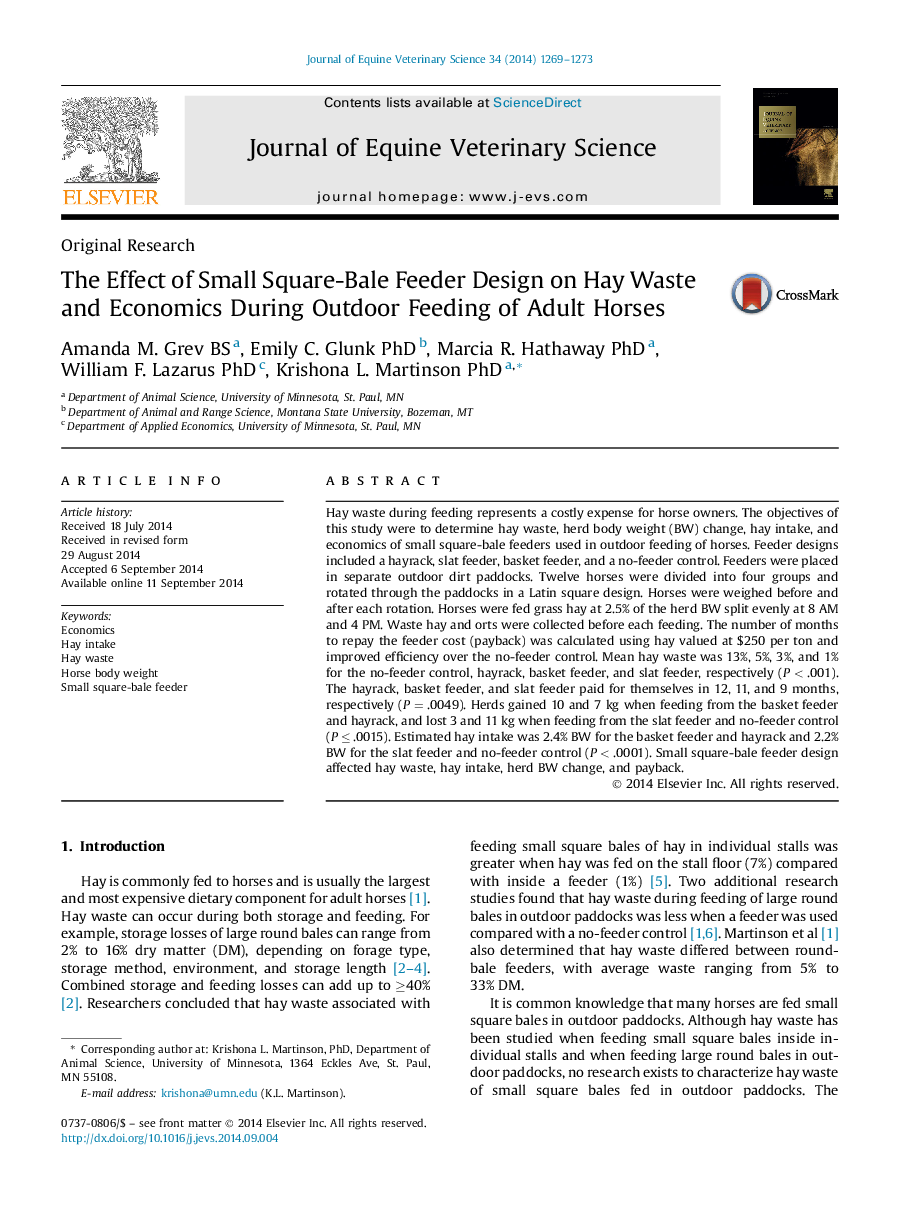| Article ID | Journal | Published Year | Pages | File Type |
|---|---|---|---|---|
| 8483614 | Journal of Equine Veterinary Science | 2014 | 5 Pages |
Abstract
Hay waste during feeding represents a costly expense for horse owners. The objectives of this study were to determine hay waste, herd body weight (BW) change, hay intake, and economics of small square-bale feeders used in outdoor feeding of horses. Feeder designs included a hayrack, slat feeder, basket feeder, and a no-feeder control. Feeders were placed in separate outdoor dirt paddocks. Twelve horses were divided into four groups and rotated through the paddocks in a Latin square design. Horses were weighed before and after each rotation. Horses were fed grass hay at 2.5% of the herd BW split evenly at 8 AM and 4 PM. Waste hay and orts were collected before each feeding. The number of months to repay the feeder cost (payback) was calculated using hay valued at $250 per ton and improved efficiency over the no-feeder control. Mean hay waste was 13%, 5%, 3%, and 1% for the no-feeder control, hayrack, basket feeder, and slat feeder, respectively (P < .001). The hayrack, basket feeder, and slat feeder paid for themselves in 12, 11, and 9 months, respectively (P = .0049). Herds gained 10 and 7 kg when feeding from the basket feeder and hayrack, and lost 3 and 11 kg when feeding from the slat feeder and no-feeder control (P ⤠.0015). Estimated hay intake was 2.4% BW for the basket feeder and hayrack and 2.2% BW for the slat feeder and no-feeder control (P < .0001). Small square-bale feeder design affected hay waste, hay intake, herd BW change, and payback.
Keywords
Related Topics
Life Sciences
Agricultural and Biological Sciences
Animal Science and Zoology
Authors
Amanda M. BS, Emily C. PhD, Marcia R. PhD, William F. PhD, Krishona L. PhD,
